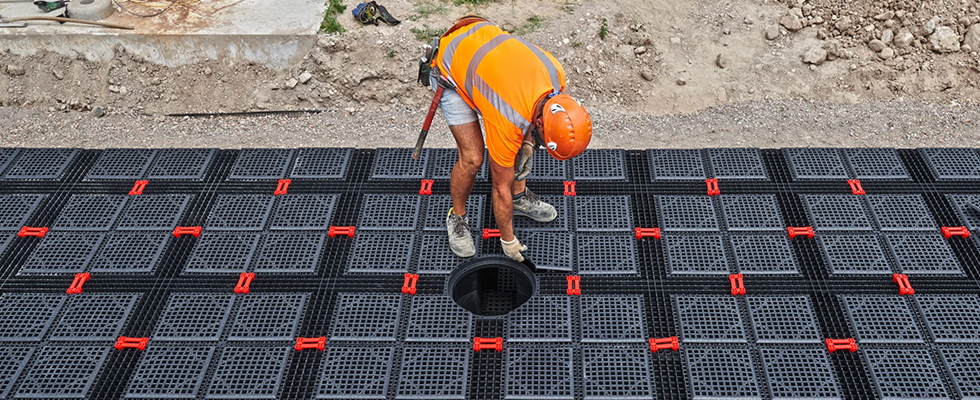How to fix USA sustainability problem – one big box store at a time
13 July 2022
There were over 116,000 big-box stores across the USA in 2017. Although many have been closed during the Covid ‘retail apocalypse’, their number is now steadily rising – over 8,000 openings were announced in 2021, preceding the number of closings by more than double.
Despite the fact that every opening requires refurbishments and presents an opportunity to improve sustainable profitability, big-box stores keep repeating old errors: rainwater is managed with retention ponds, flat roofs are wasting heating and cooling energy, while asphalt parkings increase flood risks and urban heat islands.
Simultaneously, climate crisis awareness is steadily rising among political actors, the media, and most importantly – the customers making the adaptation of big-box stores paramount for their future expansion and profit.
We have developed many efficient and easy-to-install solutions, able to increase the sustainable profitability of old and newly built big-box stores right now:
Stormwater management
Solving rainwater management problems with retention ponds brings on a number of maintenance issues and increases CO2 emissions. Water products such as Aquabox are easier to install, more efficient, compact, and adaptable to various environmental and urban conditions.
Energy efficiency
Big-box stores have immense roof surfaces that absorb heat in summer and give it off in winter, wasting significant amounts of energy. Our green roofs and walls add an extra layer of insulation to the building, saving 35 % to 40 % of energy for air conditioning and heating.
Flooding and urban heat island
Big-box stores require big parking lots that increase the city’s asphalt surfaces. We offer a number of green parking solutions that improve the permeability of surrounding soil, decreasing flood risks and urban heat islands.
Logistics pollution and costs
Heavy-duty vehicle transport is responsible for 6 % of CO2 emissions. Reducing it by using lightweight, stackable building solutions and growing produce in green roof gardens decreases the building’s costs, maintenance, and improves its sustainability.
Clearly, the path towards a sustainable and more profitable big-box building is actually quite simple – it can be attained in less than a month in only a few easy steps:
- Preliminary commitment by client,
- Geoplast consulting team studies the problem and suggests the solution (1 week),
- Proposal and contract signed,
- Installation of the solution (1-3 weeks).
Here are a few examples of completed projects:
Stormwater management:
Green driveways:
Green roofs:
Contact us to make your next big-box project more sustainable.









